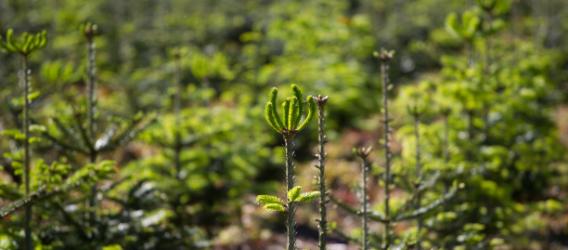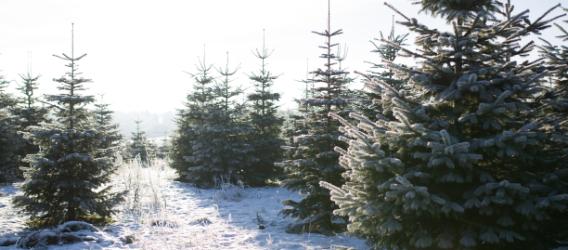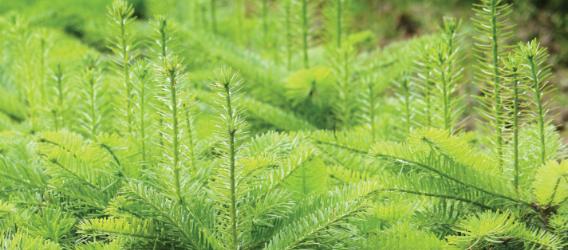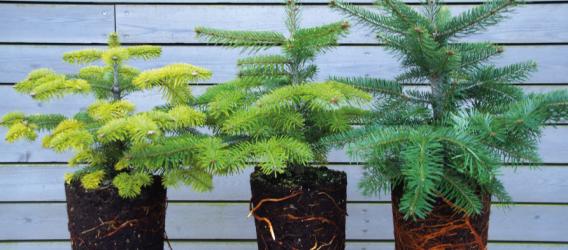
Frost in Christmas trees
A Christmas tree grower must pay close attention to frost and frost damages. Some species tolerate frost better than others. Some trees have late bursting and are rarely exposed to frost in the spring time, others tolerate very harsh frost in the winter. Here you can learn about the damages winter and spring frost can cause and about other factors affecting your Christmas trees.
The physiological state of the tree
During the year, Christmas trees undergo a so-called hardening process. This process is depending on the weather, which means that the trees are not prepared for large and sudden fluctuations in temperature. If they, however, have a longer period of time when it is slowly getting colder, their frost resistance will be higher.
Periods with mild winter weather lead to a reduced frost resistance. The same in early spring when warm days quickly make the trees "wake up", increase the physiological activity and thereby reduce the frost resistance significantly. In these weather conditions you have to pay extra attention to your Christmas trees and eventual frost damages.
There is of course a big difference in how much attention you have to pay to your trees, depending on where your Christmas tree culture is planted. Trees on south-facing slopes will e.g. burst earlier than trees on north-facing slopes, and are thus more vulnerable to late frost in the spring. Differences can be seen on the north and south side of the tree, where the buds on the south side may risk freezing before the buds on the north side are bursting at all.
Are you planning to establish your Christmas tree culture on an area with risk of strong frost in the winter time and late frost in the spring, then you should choose Christmas trees from a North Caucasian region, since these are more hardy than those of Georgian origin. Here you can read more about the different provenances and species of Christmas trees.
Winter frost
By black frost in the winter, where the ground and the trees are not covered by a protective layer of snow, but where the frost quickly freezes the top soil and other exposed parts of trees and plants, damages to trees can occur.
Is the frost so hard that the roots of the tree are freezing, this can cause drought damages to the tree, since the roots are unable to draw up water to the needles, which, despite of the frost, still give off water into the air. The roots of a Nordmann fir can withstand frost down to -8 degrees C.
The parts of the tree above the ground can of course also suffer from frost damages. At high minus degrees shoots, needles and buds can freeze to death. It is said that Nordmann fir is placed in hardiness zone 5a, which means that the tree usually can withstand temperatures from -26,2 - 28,8 degrees C without any problems.

Late frost or frost in the spring time
Especially young Christmas tree plants are vulnerable to late frost in the spring, since they are not yet covering the soil around them and are thus more exposed.
Frost in the spring time usually occurs at full moon and calm weather throughout May, sometimes even in June. At this time of the year, the temperature fluctuations from night to day are very high and when the cold air falls to the ground at night, it can cause considerable damage to young trees and shoots.
Naked earth or vegetation?
The risk of frost damages on areas with vegetation is higher than on areas with naked, black soil. If the temperature drops below the freezing point at night the vegetation will act as an insulating layer, and therefore the radiation from the ground does not rise and protect the trees from frost. If an area with black soil has -1 degree Celcius, an area with vegetation will have -3 to -4 degrees Celcius at the same time, which of course is crucial for the amount of frost damages in the trees.
As mentioned previously, these circumstances play a particular role in cultures with small trees, that do not cover the soil yet.
It is most likely also important how the vegetation on the surrounding areas is. Especially the areas situated against the wind play an important role in how hard a night with frost in the spring time can be on your trees. A dense vegetation with e.g. winter barley will have an airflow with a lower temperature than a naked field.

Wind causes higher chill factor and risk of frost
Longer periods with cold weather and wind are especially problematic when talking about frost damages in Christmas trees.
The wind increases the surface evaporation from the ground and carries away the heat. Furthermore, under such windy conditions the needles are cooled down even more compared to calm weather.
Observations in Sauerland, central Germany, has shown that Christmas tree cultures sheltered by the forest are not damaged, not even at strong frost, while freestanding trees got considerable frost damages under such weather conditions.
We recommend that you plant windbreaks around frost exposed cultures.
Are fully bursted plants frost resistant?
You might think that fully bursted plants would develop a certain kind of resistance to late frost in spring. Unfortunately, this is not true.
Fully bursted plants are, however, more sensitive to frost since they are very physiologically active.
Frost in spring time is very risky for young plants, because the frost will damage shoots and needles.


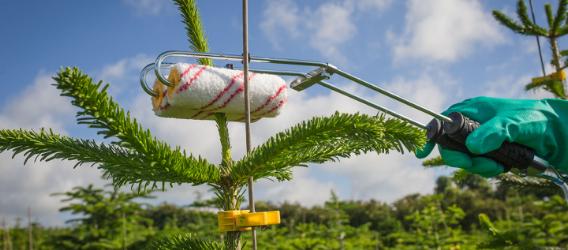
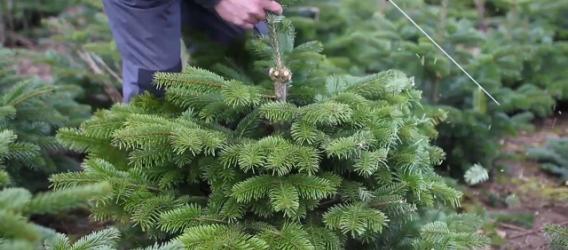
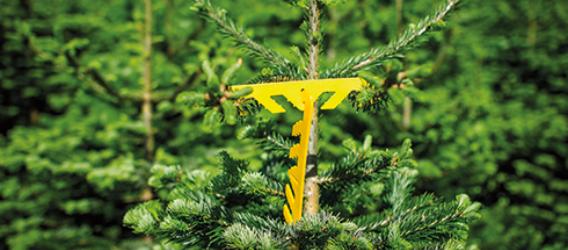
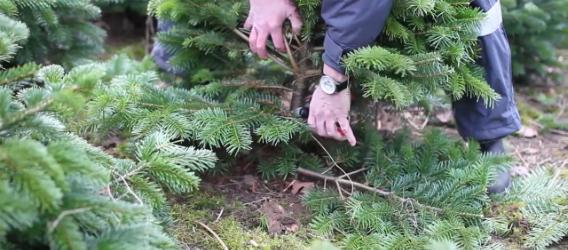
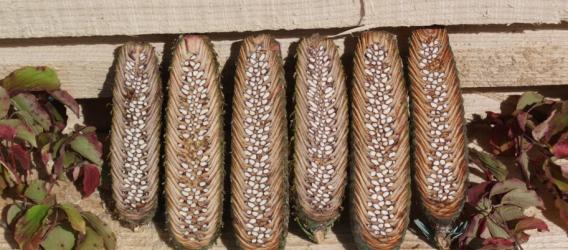
.jpg)
